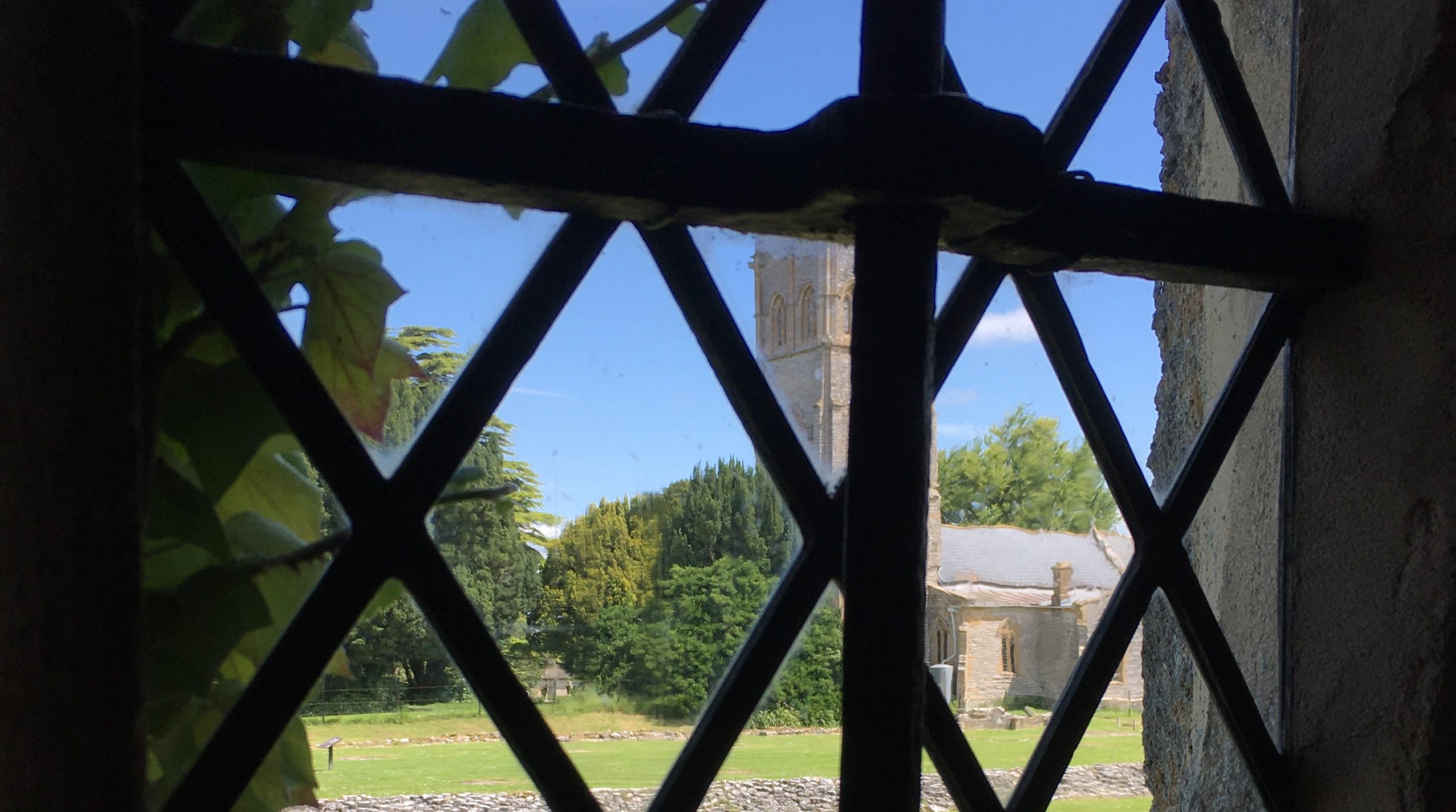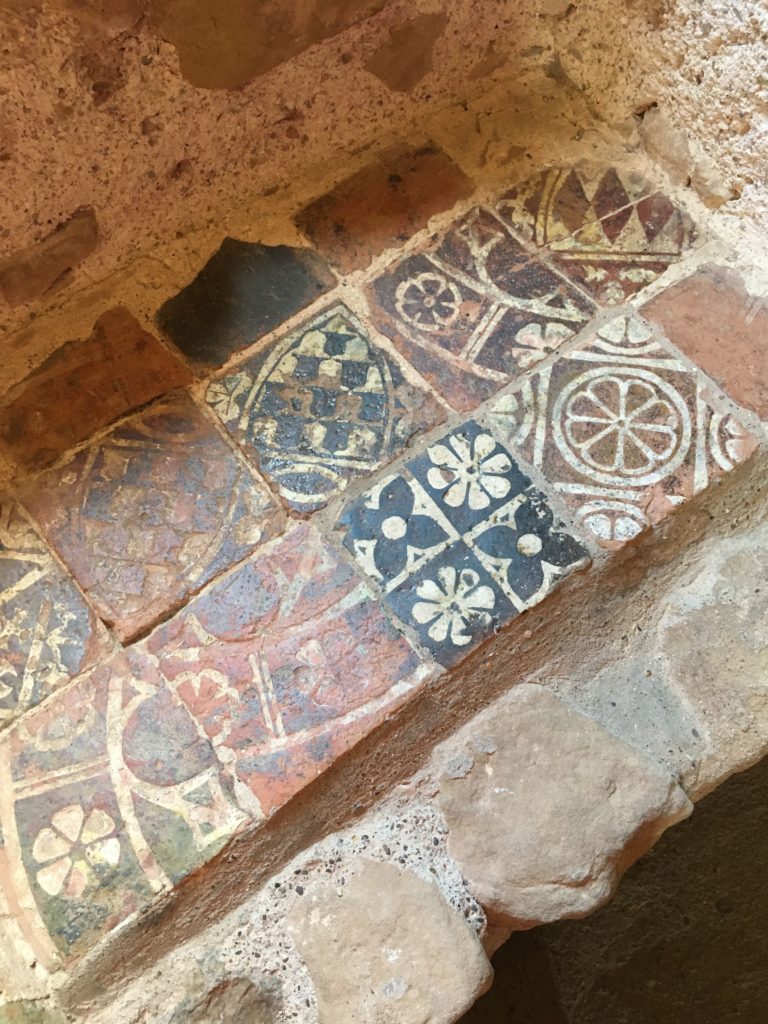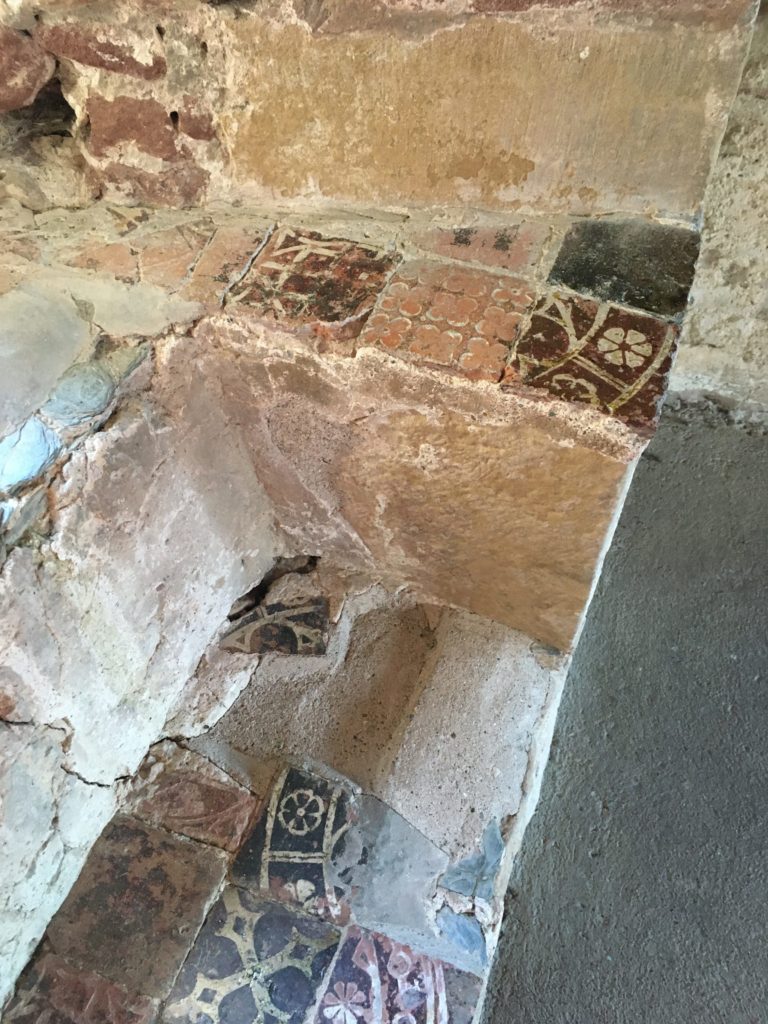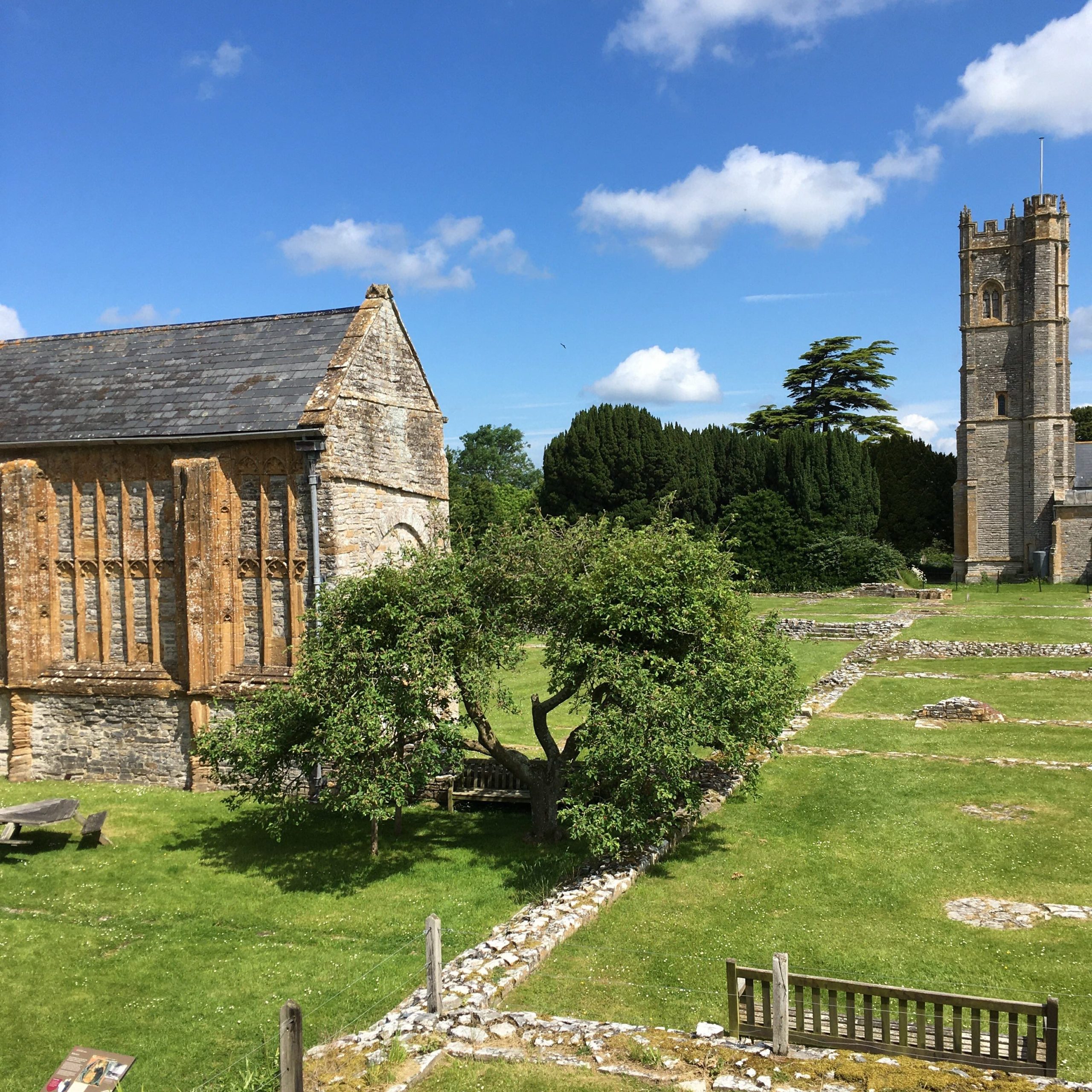
Posted by Naomi Allen
15 July 2024Naomi Allen is a PhD researcher in the Department of Archaeology and History, working on the English Cluniac congregation after the Black Death.
Standing in the north cloister walk of Benedictine Muchelney Abbey, Somerset on a perfect June day – skylarks and swallows overhead, sunshine turning the standing remains of the south cloister a dusty gold – I could almost reach back five hundred years to the monastic lives I research. Even the stoat that ran through the monastery kitchens and into a hole under the wooden staircase leading up to the superior’s lodging fitted into the picture: wouldn’t the monks and their servants have had as much trouble keeping wildlife out of their buildings as the present manager of the site? They probably hated the rats as much as he does.
Cluniac monasteries (my area of research) are laid out the same way as Benedictine houses, so as I walked over the site at Muchelney, I knew where everything should be and could compare it in my mind to the site plans of a dozen Cluniac houses that I carry in my memory. The space felt like an old friend. I was enchanted by the peace and quiet of Muchelney – where no sound was to be heard louder than the bird song – and how suitably the isolated spot fitted the vision of monastic life found in my childhood history books. I even smiled indulgently at the site manager when he talked about the nineteenth century antiquarians who first excavated the ruins and stopped digging as soon as they found the Anglo-Saxon church, as though no history existed before the Anglo-Saxons. Antiquarian sources have been key to me glimpsing the layout of some Cluniac monasteries, because the sites have been developed in the twentieth century and their ruins are lost from sight now – so I feel a little protective of antiquarians as a group.
Yet a few days later I stood in the nave of the church ruins at Cistercian Cleeve Abbey, Somerset (the background noise the traffic on the nearby Minehead road) and thought some very unkind things about antiquarians. The overcast sky and sharp wind did not help the mood of desolation that the mouldy, cold claustral buildings – objectively magnificent in the view they give of late medieval monastic spaces – had conjured in me, but I was horrified. What sort of antiquarian takes random medieval floor tiles found around the site and resituates them in the window seats of the dormitory? It looks aesthetically pleasing in a vaguely mediterranean way, but this misrepresentation of medieval monasticism outraged me as much as the historically inaccurate depiction of a Cistercian lay-brother’s life in Elsie J. Oxenham’s beloved series of girls’ stories, The Abbey Girls, did when I reread them recently.


Cleeve was the inspiration for Oxenham’s fictional abbey in the Chilterns, Gracedieu, and any fan can instantly recognise Cleeve from the descriptions in the Abbey Girls series, from the corrodians’ rooms in the south cloister (where Joy, Joan and Mrs Shirley lived in The Abbey Girls) to the chapter house in the east cloister (where the entrance to the Anglo-Saxon crypt is discovered in The Girls of the Abbey School). Oxenham first visited Cleeve in 1918, when the current visitor service and education rooms were still in use as a farmhouse and the farmer stored cider barrels in the cloisters: a series of charming black and white photographs of the ruins were held in her papers (now on display at Cleeve). Gracedieu Abbey first made its appearance in print in 1920 and I am struck by two coincidences: this was when the Arts and Crafts and Early English Folk movements were seeing a post-WWI revival, men and women seeking a way of life and appreciation of beauty that their increasingly mechanical and now war-torn society seemed to have lost. Their quest may have been driven more by a simplistic historical fantasy, than nostalgia for an actual past reality, but even though their motivation was heart-led rather than academic, they were searching for the same past as do we historians now.
The second coincidence that struck me was that when Oxenham was writing the Abbey Girls series, historian Rose Graham was publishing her research on Cluniac monasteries. Graham’s work is still the pinnacle of research on late medieval Cluniac monasteries in this country and, as such, forms the foundation on which my own research is building. The contrast between Graham’s academic and Oxenham’s fictional publications is almost laughable, yet both are deeply familiar to me and both have earned their place in the effort of preservation of the past. The one was almost scientific in its approach to interpreting medieval sources and building remains, while the other is almost bucolic as it recreated monastic scenes that existed only in its author’s imagination. It reminds me that antiquarians were not modern, trained archaeologists and historians; they did not always reach what we now know are the correct interpretations of the ruins they excavated and described with artistic eyes and dreaming pens. But perhaps there is a danger that we post-modern academics do not always reach the right conclusions as well, in our clinical, detached search for an objectively true interpretation of a past that we, like the antiquarians, have not ourselves inhabited?

Muchelney fitted a fantasy picture of monasteries as places of isolated calm that I had not realised I still cherished and my visit put me in a good humour with antiquarians, because our visions were aligned. On the other hand, Cleeve felt noisy and disenchanting, putting me out of humour with everything that did not represent medieval monastic life as cold, dirty and brutally hard work, but with antiquarians more than anybody else. Yet looking back through the camera roll from my visits to Muchelney and Cleeve, I note wryly that I have always reached for the aesthetically pleasing view, the angle where the light falls just-so or which would make a nice painting. Judged solely on this evidence, my view of the monastic ruins is as picturesque as the antiquarians we love to hate. Perhaps antiquarians bother us so much as historians because they sit on the opposite end of the same spectrum as we do, searching for the past with a bias towards idealism or realism. Yet we need each other to balance out our extremes: somewhere in the middle, between the skylarks and the mouldy walls, perhaps our two apparently opposing interpretations of the past can meet in a recognition that the monks who lived in these monasteries all those years ago were people just as much as we are. They lived out lives we cannot fully recreate or imagine, but like the antiquarians and like us, some of them would have had a moment to step outside their cold rooms and pause to appreciate the achingly beautiful song of a skylark on a June morning.